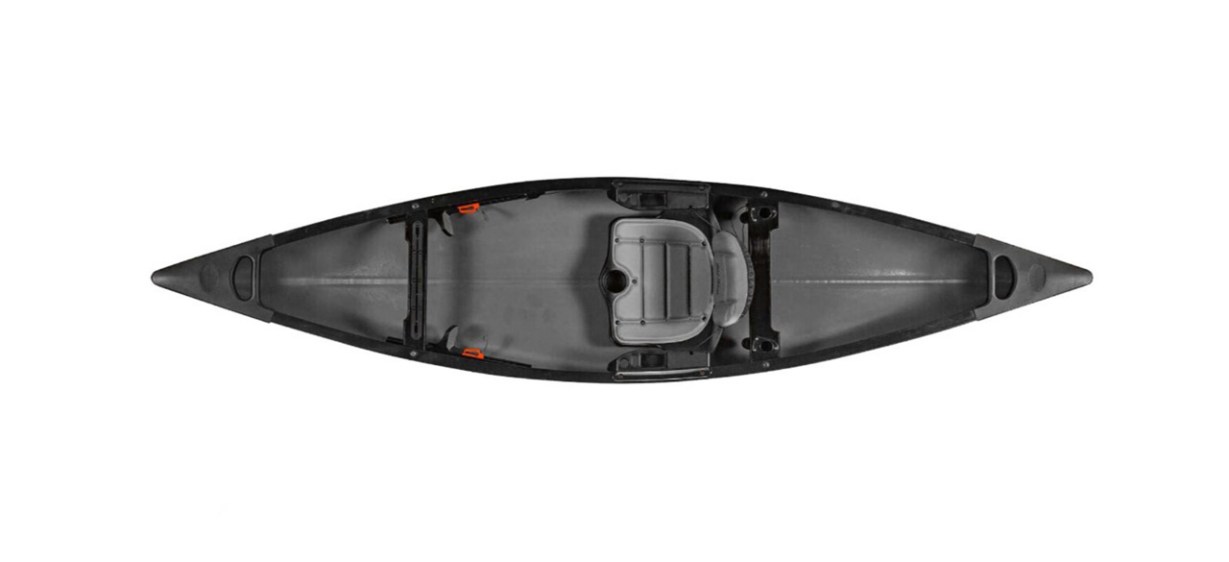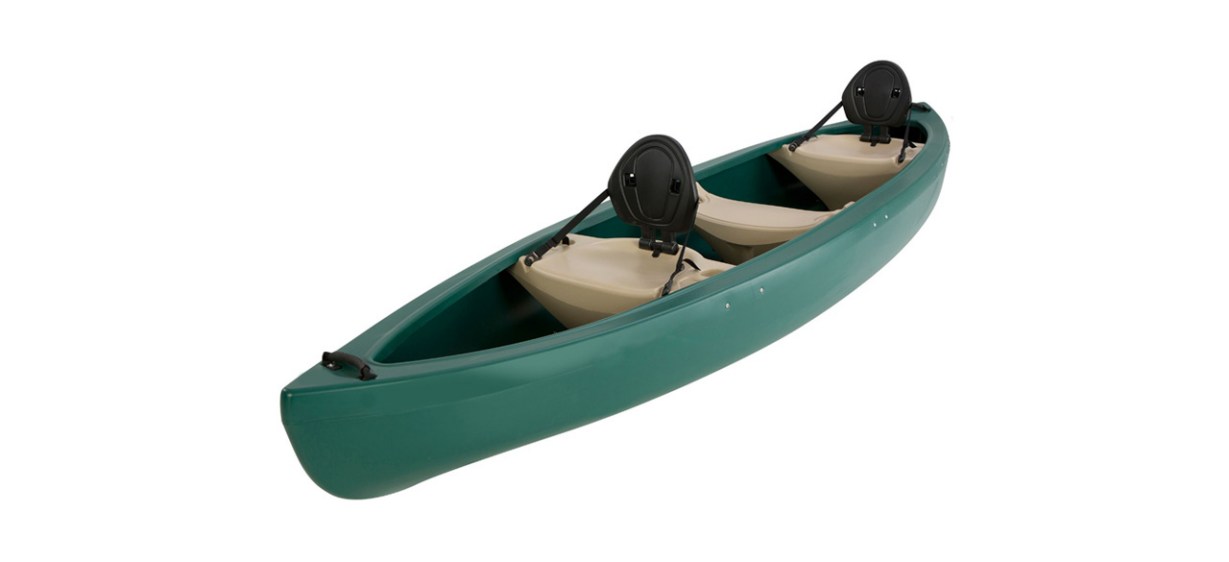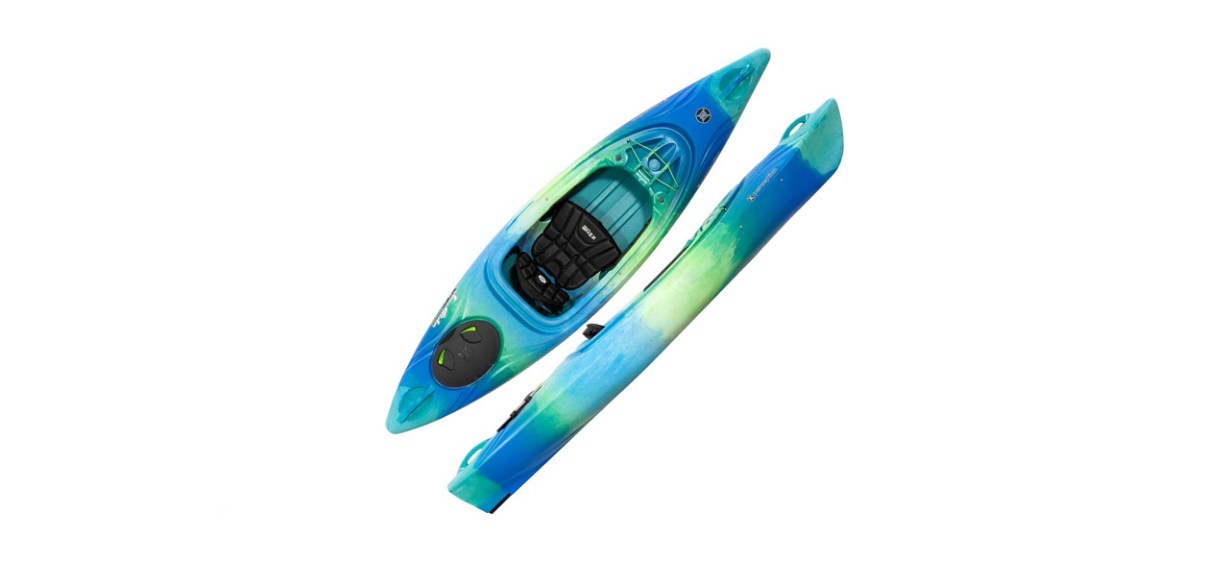Which is better, a canoe or a kayak?
Whether for a leisure escape or to work out your core and upper body, hitting the water in a kayak or canoe offers both mental and physical stimulation while exploring nature. These are two of the most common recreational boats to take to a lake, river or bay, but key differences between them can mean a very different outing.
The main distinction between a kayak and a canoe involves size and stability. Canoes are wider, taller and offer more room for social or independent adventures than smaller, more intimate kayaks.
Canoe
Canoes are generally open, elongated water vessels with high sides. They may fit one or several people on one or more benches and are typically stable, even when getting in and out. They are propelled manually by a paddle.
There are a few different types of canoes, with the most basic and standard model designed for recreation. These are stable, often heavy, and ideal for leisurely excursions on the water, such as fishing. The average recreational canoe spans around 16 feet long, but smaller and larger canoes are also available.
Racing canoes are designed for competitive paddlers. These are narrower and designed for one or two people. River or whitewater canoes are built to sit closer to the water and have increased maneuverability.
Canoe pros
- Capacity: Canoes are larger and have more room to move around and accommodate others. It means you can bring items like fishing gear or food and beverages along for the ride.
- Stability: With wider bottoms and taller sides, canoes provide more stability and space for riders. Canoes better accommodate beginners learning to paddle.
- Comfort: As you can adjust your seat, stretch and stand as needed, canoes afford more comfort. Water is also unlikely to get in.
Canoe cons
- Size: Canoes tend to be heavy and large, making them difficult to transport and store.
- Effort: With recreational canoes, more effort is required to get where you want to go, especially if paddling solo. The large size can also create momentum that’s hard to slow.
- Steering: Canoes are tricky to change direction, especially at sharp angles.
Best canoes
Old Town Sportsman Discovery Solo Canoe
With adjustable padded seating, armrests and cup holders, this spacious and stylish recreational canoe allows one person to enjoy relaxing leisure activities on the water.
Available at Backcountry and Dick’s Sporting Goods
This three-person canoe comes at a low price while offering convenient perks, including reel and cup holders, comfortable seat backs and carry handles.
Available at Dick’s Sporting Goods
Kayak
Kayaks are light, narrow and built for a single rider. Unlike a canoe, a kayak features a closed cockpit designed for one person to slip into. The seat is built into the cockpit, allowing little to no movement. Kayakers use a double-ended paddle with blades on either end to move across the water.
The recreational kayak is around 10 to 12 feet in length. Sea kayaks are longer and designed for increased speed along greater distances, while river or whitewater kayaks are built for maneuverability. Inflatable kayaks offer inexpensive fun with easy transport, though they lack speed and durability.
Kayak pros
- Effort: Kayaks are light and narrow, so they can travel long distances and obtain higher speeds with less effort.
- Weight: The lighter weight makes kayaks easy for a single person to transport on their own.
- Intimacy: You have the chance to feel closer to nature in a kayak as it sits low with little between you and the water.
Kayak cons
- Water: You should dress appropriately for kayaking as you’re likely to get wet.
- Stability: Kayaks are harder to get into and out of, with falls likely for beginners. On rough water, there is a chance of tipping over.
- Paddles: Double paddles are heavy, and the repeated paddling action over a long period may strain your arms.
Best kayaks
This 10-foot-long kayak is ideal for beginners and amateurs tackling calmer waters. An adjustable seat, cup holder and thigh padding provide comfort and convenience.
Available at Dick’s Sporting Goods and Backcountry
The compact design of this stylish kayak allows for leisurely rides as well as fast, active pursuits. The lightweight construction makes for easy transport.
Available at Dick’s Sporting Goods and Backcountry
Should you get a canoe or a kayak?
As kayaks are smaller, lighter and more maneuverable, they are recommended for a single person looking to be active on the water. Most offer some storage as well as a cup holder to make a trip on the water fun and comfortable.
For those seeking a more social outing, a canoe offers more space for people and items. The better stability also means you won’t need to worry about water coming in — or anyone falling out.
Want to shop the best products at the best prices? Check out Daily Deals from BestReviews.
Sign up here to receive the BestReviews weekly newsletter for useful advice on new products and noteworthy deals.
Anthony Marcusa writes for BestReviews. BestReviews has helped millions of consumers simplify their purchasing decisions, saving them time and money.
Copyright 2022 BestReviews, a Nexstar company. All rights reserved.
















